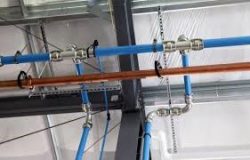Top 5 tips to keep your production going
November 18, 2019 1:55 pm
To maximise productivity, every company needs a sound production plan. However, effective planning is a complex process that covers a wide variety of activities to ensure that materials, equipment and human resources are available when and where they are needed. Production planning is like a roadmap: It helps you know where you are going and how long it will take you to get there. One of the key areas to plan for is maintenance allowing time for preventative work and knowing how you will cope with emergencies. Here are some things you may want to consider
- Assess the potential problems
Many factories are working with equipment that is twenty or more years old, including many pieces of kit that are no longer supported by the original suppliers. Parts often become unavailable or are made overseas, meaning they can take weeks to deliver. Knowing your support networks and equipment availability can mean the difference between a few hours or many weeks of downtime.
- Calculate the cost of downtime
True downtime costs include staff standing idle, loss in production of actual goods, number of man hours devoted to planning and making up the shortfall, the unexpected costs of equipment repair, and damage to reputation. Understanding what the cost in pounds per hour of stalled production can often make the cost of a servicing contract for your critical systems seem trivial.
- Have a preventative maintenance schedule
Equipment will not last forever, but a maintenance schedule will increase its life. Maintenance reduces the probability of failure and downtime, increases overall equipment effectiveness, improves safety and increases productivity. A 2017 study by Plant Engineering Magazine found that 78% of facilities follow a preventative maintenance strategy, while 59% use a computerised maintenance management system.
- Involve your staff
Not just the maintenance team but crucially the production operatives. While operator error can be a contributing factor to machine failure, they are also the people in the best position to diagnose and give early warning of a potential breakdown. Who knows the plant better than the people operating it every day?
- Backup, Backup, Backup
This doesn’t only apply to the I.T world. While you can’t have whole spare machines, you can have copies of the software, and backup the in-use control systems. You can also liaise with your service providers and equipment suppliers to have the most common service items available in house or locally. Again, this comes down to calculating the cost of downtime compared to a small stockholding of parts.
Working with specialists in the fields relevant to the equipment in your factory can enable you to have the expertise you need on hand when you need it. Picking up the phone when the problem is small can prevent escalation to a major breakdown. Harrier Pneumatics engineers have been servicing compressed air systems across the South and West for over 30 years. We will provide a regular maintenance and servicing regime that ensures your equipment performs at its very best, well beyond its warranty period. Get in touch to discuss how we can help keep your production on track.
Categorised in: Uncategorized
This post was written by Harrier Pneumatics





